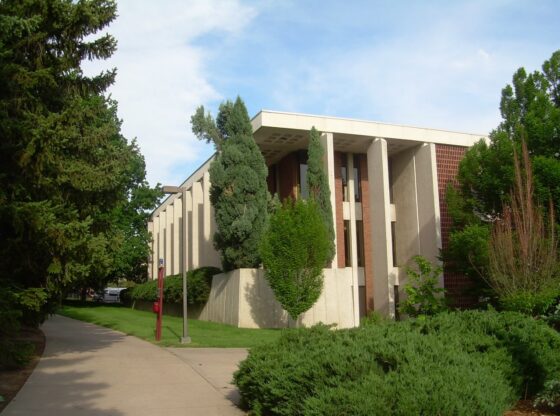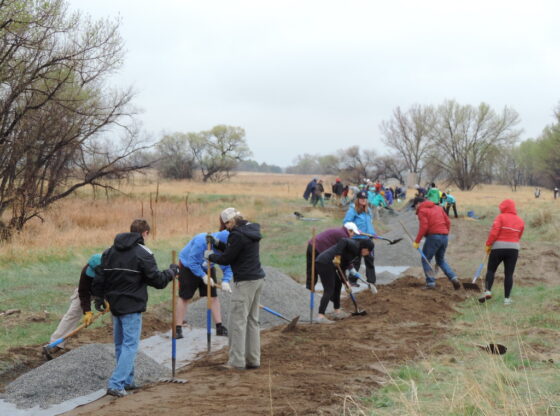 Photo by: Justin Edmonds
Photo by: Justin Edmonds
DU University Architect Mark Rodgers came to Colorado in 1991 from a project designing a prison in New York City. After working under former University Architect Cabell “Cab” Childress, Rodgers became his successor in 1999.
When Childress and Rodgers arrived at DU he inherited a “fleet of buildings from the 1950s that had more problems than the buildings from the 1910s, 1920s and 1930s.” He said durability became an important goal, because they did not want to turn crumbling buildings over to the next generation of DU students.
According to Rodgers, until recently there was previously no architectural style that held the university together. The campus was “disparate and haphazard,” he said.
When Childress was University Architect, former Chancellor Daniel Ritchie led a venture to establish a distinctive DU style. The traditional collegiate Gothic building, Margery Reed Hall, was the inspiration, Rodgers said. This architectural genre is present at most Ivy League universities. This building exemplified the durability, attention to detail, and thoughtful space design the university was seeking.
Childress was the lead architect on many notable DU construction projects-Olin Hall, the Ritchie Center, Daniels College of Business, and the Newman Center. He created the signature DU palette of copper, sandstone, limestone and red brick.
According to the DU web site, these materials intend to “mirror the colors and textures of Colorado’s rock formations and rugged peaks.”
Rodgers explains that Ritchie wanted buildings that would be easy to take care of, used outside of their original purpose, and that would be assets for the long haul that would poise the institution to thrive.
Rodgers said Ritchie wanted buildings that would last for centuries. The buildings should have an eternal, adaptable design to allow their purpose to evolve over time.
Rodgers says his job, simply put, is to fulfill the chancellor’s vision. During his tenure, he hopes to continue to add campus buildings in the distinctive DU style that will endure architectural trends and facilitate learning.
He said current DU Chancellor Robert Coombe would like him to focus on improving academics through buildings that promote active learning-a more formidable task than simply designing classrooms, he said. “Our projects need to help attract a few more great students.”
Rodgers said he will collaborate with students and faculty in his designs. He hopes to create an environment where students come to study together. “It’s the learning that happens in-between that is often as important as that in the classroom,” he said.
Rodgers credits partnerships between the University and many prominent firms for the changes to the DU architectural landscape over the past 15 years.
“We enjoy working collaboratively with exceptional local, regional, and national firms to make what we believe are outstanding projects,” he said.
“We’ve got to have great buildings that allow great learning.”












